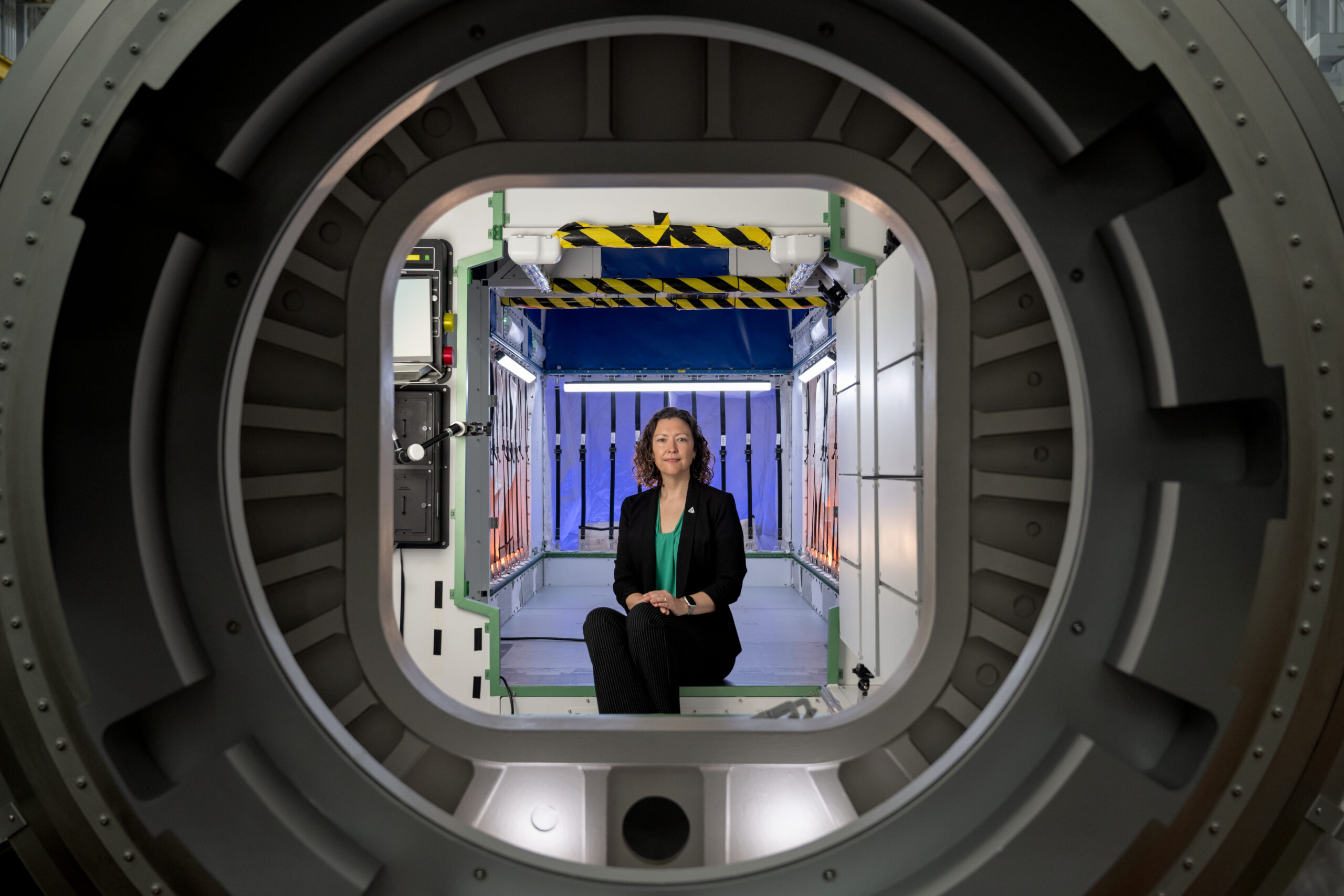Gateway’s Role in Advancing Deep Space Science
The Gateway, a pioneering lunar space station, is set to open new horizons in the realm of space exploration by facilitating groundbreaking research opportunities in lunar orbit. As humanity’s first outpost beyond Earth, it promises to revolutionize our understanding of space and provide a stepping stone for future missions to Mars.
Stephanie Dudley plays a pivotal role at the intersection of human spaceflight and scientific exploration for the Gateway project. Serving as the mission integration and utilization manager, Dudley’s work is central to Gateway’s mission of hosting astronauts and conducting unique scientific investigations. Her responsibilities include collaborating with NASA’s partner space agencies and academic institutions to identify and maximize scientific opportunities aboard Gateway.
Inside Gateway: The HALO Module
The Habitation and Logistics Outpost (HALO) is a high-fidelity module within the Gateway where astronauts will live, conduct experiments, and prepare for missions, particularly targeting the lunar South Pole region. Dudley was recently photographed in a mockup of HALO, symbolizing her integral role in this ambitious project.
HALO will be the hub for numerous science experiments, including the Heliophysics Environmental and Radiation Measurement Experiment Suite, an initiative spearheaded by NASA. Another significant experiment is the Internal Dosimeter Array, a collaboration involving the European Space Agency (ESA) and the Japan Aerospace Exploration Agency (JAXA). The heliophysics experiment will be installed on HALO’s exterior, while the dosimeter will reside within the Gateway, housed in a series of racks. Both experiments aim to study solar and cosmic radiation, crucial for understanding how to safeguard astronauts and equipment during extended space missions, such as those planned for Mars.
A 15-Year Vision for Scientific Discovery
Dudley has expressed optimism about Gateway’s potential, stating, "We are building [Gateway] for a 15-year lifespan, but definitely hope that we go longer than that." This extended duration of scientific study in a previously unexplored environment will enable groundbreaking research and insights into human endurance and adaptability in space.
In addition to her role with Gateway, Dudley also serves as a deputy director for the Exploration Operations Office within NASA’s Moon to Mars Program. This position connects her to the broader Artemis science endeavors beyond Gateway, including scientific investigations aboard the Orion spacecraft, the Human Landing System, and the lunar terrain vehicle.
Coordinating Science for Artemis Missions
Dudley’s team is tasked with coordinating science payloads for Artemis II and Artemis III. Artemis II marks the first mission to send humans to the Moon since 1972, while Artemis III will see the first landing in the lunar South Pole region, a location of significant interest to the global scientific community.
The HALO module will launch alongside the Gateway’s Power and Propulsion Element, paving the way for the Artemis IV mission in 2028. This mission will mark the first lunar endeavor to include an orbiting space station, further cementing Gateway’s role as a cornerstone of lunar exploration.
The Future of Gateway: Bridging Science Fiction and Reality
Dudley has remarked on the seemingly science fiction nature of Gateway, stating, "Gateway sounds so science fiction, but it’s real. And we’re building it. And in a few years, it’s going to be around the Moon and that’s when the real work, the fun work in my opinion, is going to begin and science will never be the same." This sentiment underscores the transformative potential of Gateway in advancing human knowledge and capabilities in space.
Gateway’s Impact on the Artemis Campaign
Gateway is a critical component of NASA’s Artemis campaign, an initiative designed to return humans to the Moon for scientific exploration and to lay the groundwork for human missions to Mars. By providing a platform for long-term human habitation and research in space, Gateway will play an essential role in expanding our presence beyond Earth.
Technical Insights and Broader Implications
Understanding the technical aspects of Gateway’s mission is crucial for appreciating its implications. HALO, for example, will serve as a crucial habitat and laboratory in space, providing astronauts with the necessary infrastructure to live and work in space for extended periods. By studying radiation exposure through experiments like the Heliophysics Environmental and Radiation Measurement Experiment Suite and the Internal Dosimeter Array, Gateway will contribute valuable data to the ongoing effort to protect astronauts on long-duration missions.
Moreover, Gateway will facilitate international collaboration, bringing together agencies like NASA, ESA, and JAXA to share resources and expertise. This global partnership underscores the shared human interest in exploring and understanding space.
Gateway’s Promise for the Future
The successful implementation of Gateway will herald a new era of space exploration, offering a platform for conducting experiments that are impossible on Earth. Its strategic location in lunar orbit will provide unparalleled vantage points for observing the Moon and beyond, enabling scientists to conduct research that could lead to breakthroughs in fields like astrophysics, biology, and materials science.
Gateway’s legacy will extend beyond its immediate scientific contributions. By serving as a proving ground for technologies and operations essential for future Mars missions, Gateway will help humanity take its next giant leap toward becoming a multi-planetary species.
In summary, Gateway represents a bold step forward in space exploration, promising to transform our understanding of the cosmos and our place within it. Through collaboration, innovation, and relentless pursuit of knowledge, Gateway will not only advance scientific discovery but also inspire future generations to reach for the stars.
For more information and updates on Gateway and other NASA missions, you can visit the official NASA Gateway website.
For more Information, Refer to this article.



































